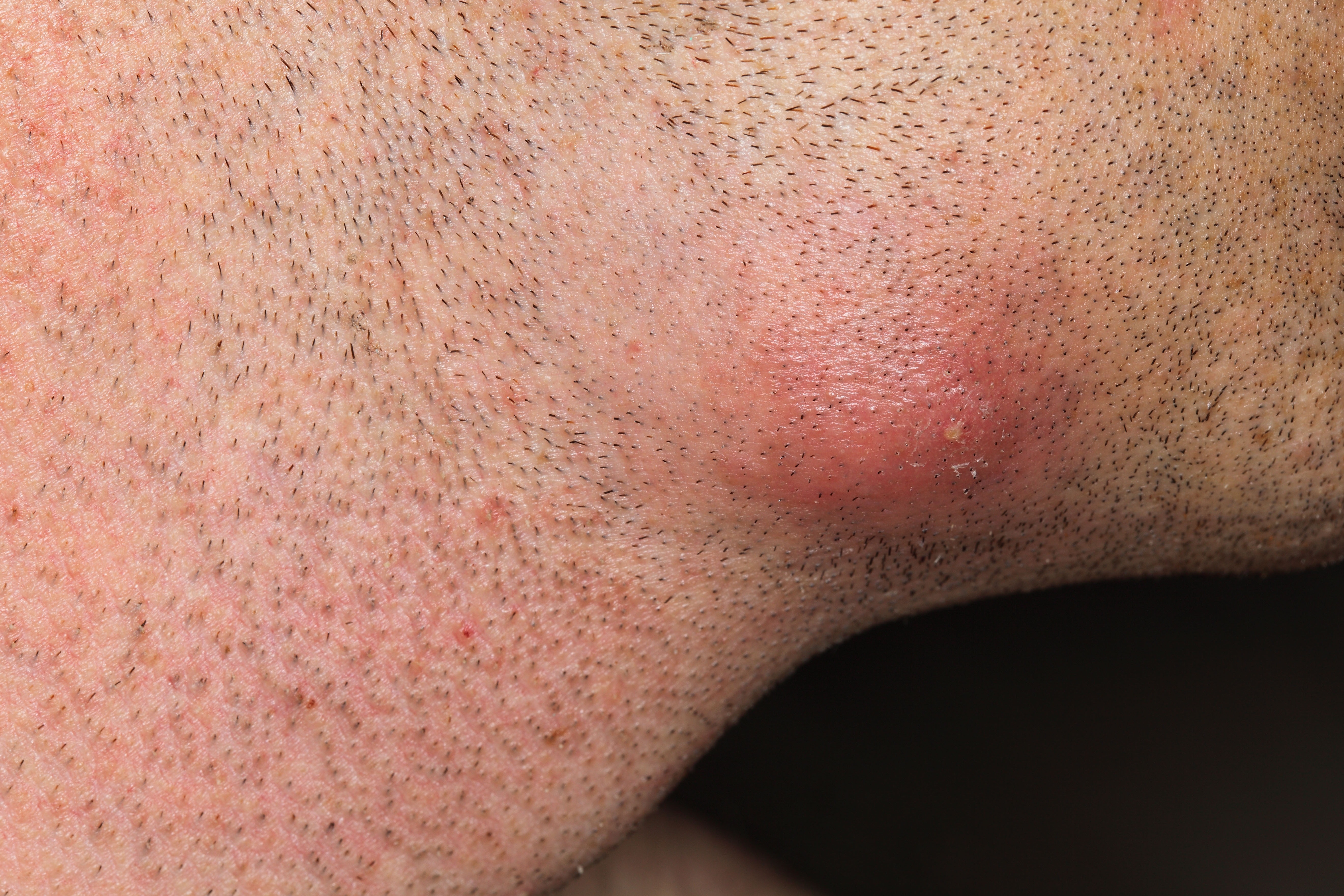What are boils?
Boils are painful, red, pus-filled lumps on your skin caused by an infection of hair follicles. One infected hair follicle is called a furuncle, and a group of infected follicles joined together is known as a carbuncle.
Boils can occur anywhere, but most often in hairy areas that sweat or rub, such as your:
- face or neck
- armpits
- groin or vagina
- inner thigh or buttocks.
What are the symptoms of boils?
Symptoms of boils include:
- a red, tender lump with a white or yellow centre
- pain
- feeling unwell and having fevers, particularly with a large boil

What are the causes of boils?
Boils are usually caused by infection with the bacteria staphylococcus aureus. These bacteria usually live on your skin without causing harm, but can sometimes infect hair follicles, for example, if the skin is broken. The infection can spread to other parts of your body, or to other people.
Anyone can develop a boil. You are more at risk if:
- you come into close contact with someone who has a staph infection
- you have diabetes
- you have other skin conditions
- you have a weakened immune system

When should I see my doctor?
You can look after small boils on your own, but you may need to see your doctor for treatment of large boils. If a boil spreads, gets worse quickly or you develop a fever, you should see your doctor. You should also see your doctor if the boil is on your face, if it is very painful or if it hasn’t healed in 2 weeks.
How are boils diagnosed?
Your doctor will diagnose a boils based on its appearance on your skin, and checking for other symptoms of infection, such as pain or fever. If there is discharge from the boil, your doctor may take a swab to help identify the bacteria causing the boil.
How are boils treated?
Boils should be kept clean and covered.
Pus needs to drain before a boil will heal. This may happen by itself, but sometimes your doctor will need to treat it.
For small boils, you can put a clean warm compress on the boil several times a day. This may help the pus to drain.
For larger boils and carbuncles (larger than 5cm), see your doctor. They may need to make a small cut in the boil to help the pus drain, and you may need antibiotics. Large boils and carbuncles can leave a scar on the skin.
It is important not to squeeze or pop boils, as this can be very painful and can spread the infection.
How are boils prevented?
Boils and skin infections can be prevented by;
- washing hands often with soap
- bathing and showering regularly
- not scratching at scabs
- cleaning and covering scratches and cuts
- not sharing towels or personal items like razors
Complications of boils
Boils do not usually cause complications. Sometimes there is a cluster of boils (carbuncle). If you have a carbuncle, you may have fever and feel generally unwell. Carbuncles are more likely to need antibiotics and see a doctor to have the pus drained.
Cellulitis (infection of the soft tissue around the carbuncle) can sometimes occur, but this is not common.



